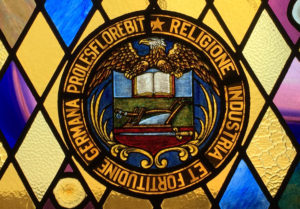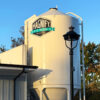There is a good case to be made that many women what were considered to be “witches” of medieval times were actually women that brewed beer. Brewing beer was typically part of tending the medieval home, and it was considered to be woman’s work. Of course, no one lived very long back then, but men often died before their wives did, due to working in the fields, hunting, soldiering, etc. When the husbands died, the women had to fend for themselves to find a way to make a living alone. There just weren’t a lot of options for them.
Often these widows were older and also acted as midwives – assisting at births and sharing herbs and potions based on plants that acted as rudimentary medicine. They also collected herbs to add to their beer to make it taste better – so it would sell better. At the time these women were sometimes called “Alewives”.
So, the story of witches has some real iconography – bubbling cauldrons, black cats, broom sticks, pointed hats etc. How does that relate to brewing?
The alewives would brew their beer in a large pot (or cauldron) in their home – and since they needed to keep the rats and other vermin from their stocks of brewing grain, they usually had several cats in their homes (yes, some may have been black cats).
Those women who made good beer had wares that were locally sought after, and so thirsty patrons would be wanting to know when a batch was ready for sale. The “sign” that these early brewers used to show that the beer was ready was putting a broom outside the door. (Later more enterprising brewers put the broom sticking out over the door to get more attention – likely the origin of the first pub sign). The women brewers would also go to local fairs to sell their wares, and it was common practice for them to wear very tall hats so that people at the fairgrounds could easily spot them over the crowd.
Unfortunately for the alewives, as the medieval Christian church continued to gain power in Europe, the church leaders began to organize “guilds” for running commercial businesses, and these guilds were run by men. They didn’t need competition from the alewives, or want their involvement in their male-only guild halls.
As Christianity expanded through Europe the then popular religion “Paganism” was being systematically stamped out. Many of the herbalist alewives were likely to be Pagans, involved in creating medicines, participating in births and deaths. Calling them witches and burning them publicly certainly discouraged women from brewing, and also served to eliminate more practicing Pagans – and their threat to Christianity and the male dominated brewers guilds. All a citizen would have to do is claim that they saw a baby die that had been delivered by a midwife or claim that they got sick from drinking stale beer – and that was all the proof that was needed.
That (fortunately) did not end the story of woman as the original brewers, as all over the world – from Africa to South America, women still practiced the art as part of feeding their families and local communities.












